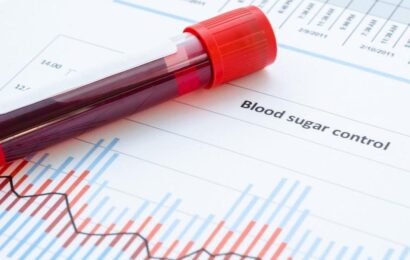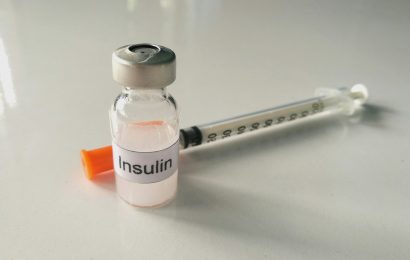If one of your goals is to gain weight, it helps to have a game plan in mind. Just as there are smart, sensible ways to lose weight, there are strategies for gaining weight in a healthful way. Loading up on sugary, fatty foods may certainly put the pounds on, but common sense tells us that scarfing down bowls of ice cream every day won’t win you the dietitian seal of approval.
The key, as always, is to focus on nutrient-rich (and in this case, higher-calorie) foods, whether you’re trying to gain, lose, or maintain your weight. The other consideration, of course, is your diabetes. You need to consider the effect of increased food intake on your blood glucose control.
Calories count
While it’s usually not necessary to count calories, it does help to have an understanding of A) how many calories you need (approximately) to gain (or lose) weight and B) how many calories are in the foods you eat. While somewhat simplistic and not entirely accurate, one guideline you can keep in mind is that it takes approximately 3500 calories to gain one pound. It follows, then, that to put on one pound in a week, you must increase your daily food intake by 500 calories.
There are a number of online calorie calculators that can give you a sense of how many calories you need, based on factors such as your age, gender, height, weight, and activity level. A few to check out are the Mayo Clinic calculator, the My-calorie-counter.com calculator, and the FreeDieting.com calculator. Once you have a sense of where you stand with your calorie needs, you can find nutrition information from any number of Web sites, including CalorieKing and SelfNutritionData, for example.
You can also purchase a food counts book and, of course, don’t forget to read food labels for calories, carb grams, and fat grams.
Caution with carbs
As most of you know by now, loading up on carbohydrate foods, such as bread, pasta, fruit, milk, and sweets, will very likely mean an increase in blood glucose levels. That’s not to say that you shouldn’t eat more of these foods, but you’ll need to be careful with your portions and be diligent about checking your blood glucose to see how they are affecting you.
Choose your carbs wisely. Lower-glycemic-index carbs, such as whole grains, beans, and many types of fruit, are great choices, since you may not see as much of a spike in your blood glucose after eating them. Milk and yogurt also have a low glycemic index, and there’s some evidence that dairy fat may not be as unhealthy as we once thought. If your LDL (“bad”) cholesterol is within target range (below 100 in those without cardiovascular disease and below 70 in those with cardiovascular disease), it might be OK for you to drink 2% or whole milk (you may want to talk it over first with your dietitian or doctor before switching).
Finally, if eating more healthful carbohydrate foods to help you gain weight does lead to an increase in blood glucose, it’s not a bad thing to take more diabetes medicine. Of course, always talk with your health-care provider before changing your dose of any medicine.
Eat more often
There’s nothing worse than trying to force yourself to eat when you don’t feel hungry. Doing so takes a lot of the enjoyment out of eating. Some people just can’t eat a lot at one time. So, if you have a hard time finishing your meals or are always feeling full, consider trying to eat more often during the day. Rather than three meals a day, eat six smaller meals a day. Again, check your blood glucose more often if you decide to try eating this way.
Fill up on fat
Perhaps you’ve read or heard that fat has more calories than carbohydrate or protein. It’s true: Gram for gram, fat contains 9 calories, while carbohydrate and protein contain 4 calories. So it makes sense to eat more fat when you’re aiming to put on a few pounds. The catch? You need to choose healthy fats. Slathering butter on your bread or chewing the fat (literally) on a piece of steak isn’t the wisest way to boost fat calories.
Instead, focus on adding heart-healthy fats to your eating plan: Cook with more olive or canola oil, snack on nuts and seeds, munch on avocado slices, throw some olives into your salad, put natural peanut butter on just about anything — or eat it straight from the jar. Try other nut butters, too, like almond or cashew butter.
Also, keep an eye on your blood glucose levels, since eating too much fat can lead to insulin resistance, meaning that insulin (whether your own or what you inject) has a harder time lowering your blood glucose. Many people find that eating high-fat foods can lead to higher glucose levels hours later. So check your glucose with your meter and learn how fat affects you.
Pump up the protein
As long as your kidneys are in tip-top shape, you can also likely increase your protein intake. Instead of eating 3 or 4 ounces of chicken at your meal, for example, increase the amount to 6 to 8 ounces. Snack on lower-fat cheese (part-skim string cheese is a good choice), rolled up turkey breast slices, or boiled eggs. You can also try adding protein powder, like whey, to milk, coffee, yogurt, pudding, oatmeal, or muffin or pancake batter. One scoop generally contains about 100 calories. As always, read the label.
Leave out the low-calorie foods
Well, maybe not completely. But try not to fill up on foods or drinks that have no or few calories. Water, diet drinks, black coffee and tea, and broth soups may fill you up but don’t offer many calories. And while it’s important to eat vegetables, eat your broccoli or salad after you’ve eaten the higher-calorie foods on your plate.
Pump iron
Gaining weight may be your goal, but you don’t want to put all your weight on as fat. Using hand weights, kettle bells, or resistance bands or machines at the gym can help your body use those extra calories you’re consuming to build healthy muscle tissue rather than store them as fat. But don’t go overboard. Too much exercise of any kind can make it hard to keep the weight on.
See a dietitian
Consider a session or two with a dietitian if you need more ideas or guidance for gaining weight. He may recommend that you include supplemental shakes or bars, for example, in your eating plan. Ask your doctor for a referral.




